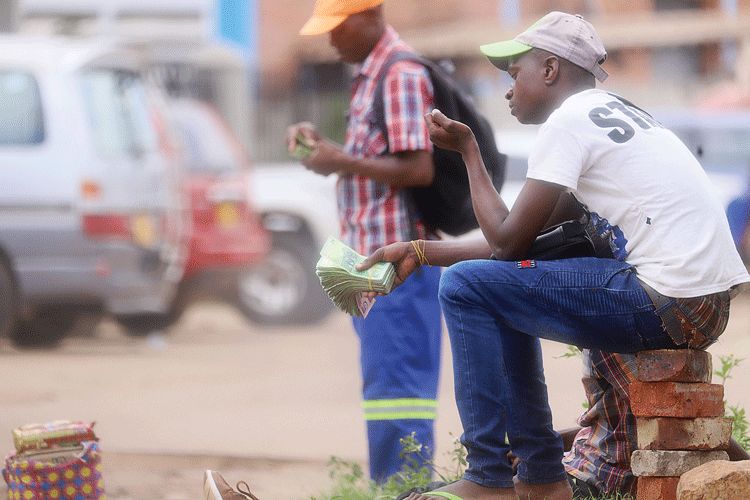
By Melody Chikono MARKET watchers have expressed mixed sentiments about the year 2022 with the economy expected to build upon the foundation which was set in the year 2021, Weekly Digest can report.
The year 2021 was characterised by the usual economic woes as the perceived currency stability was short-lived with a huge disparity emerging between the official and the parallel market rates.
The auction system battled throughout the year with a US$200 million backlog and in September, government disbursed US$70 million to clear the backlog.
The backlog in foreign currency settlement also resulted in the spiralling of parallel market premiums as importers sought quick access to foreign currency on the alternative market.
On the other hand, the country’s economy was projected to grow by 6% in 2021 after a cumulative contraction of 11% in 2019 and 2020 due to the combined effects of COVID-19, Cyclone Idai and protracted drought and weakened policy buffers.
According to the International Monetary Fund (IMF), economic activity was recovering in 2021, with real GDP expected to grow by about 6%, reflecting a bumper agricultural output, increased mining and energy production, buoyant construction and manufacturing activity and increased infrastructural investment.
Economist Clemence Machadu tells the Weekly Digest that in 2022, the normal rains being experienced are likely to boost the economy, especially agricultural production as well the upper value chains.
“The levels of vaccination will also be the key jury on the extent to which the potential of other sectors, whose wings had been clipped over the past couple of years, will be unlocked. My prospects for the new year are somewhere between bullish and bearish,” he says.
- Chamisa under fire over US$120K donation
- Mavhunga puts DeMbare into Chibuku quarterfinals
- Pension funds bet on Cabora Bassa oilfields
- Councils defy govt fire tender directive
Keep Reading
“Basically, I think the economy is going to build upon the foundation which was set by 2021, which I think I should give a highlight of before getting into 2022. So for this year 2022, I see the economy building on the momentum set by 2021, where the good rains experienced spurred the agricultural sector as well as the manufacturing sector, which has strong linkages with the agricultural sector and other productive sectors.”
Confederation of Zimbabwe Industries president Kurai Matsheza says the industry hoped 2022 would be better compared to the previous year, lamenting the rainfall patterns which he says had become worrisome as they came late, especially in the northern side of the country, where crop production is centred.
“So it’s a worry and we don’t expect it to be a good agricultural season and I don’t think it will end late. Certainly, the crop output may be affected and it will have a huge input on our performance as a country,” he says.
“The second issue is the COVID-19 outbreak. We have started the year with these enhanced measures. We hope these will be cleared soon and the infections will subside so that the economy can perform as it should.”
Matsheza adds that the currency conundrum remains as it is key to enabling businesses to operate smoothly, with high expectations that the auction system will work better to 2022 ensure that forex will be availed to businesses.
Industry capacity utilisation is seen depending on how forex will be availed and Matsheza says the hope was definitely on commodity prices which should be firm.
“As we know, most of the currency is also generated from mines. As the miners continue to perform better, it filters into the broader economy, making sure forex is availed to all of us,” he says.
“On the other hand, the industry has been retooling, this is work in progress, we are almost there. It is also a process due to currency availability. We are not yet complete, but we keep looking for money to retool our business.”
Machadu believes capacity utilisation is headed north in 2022 compared to prior year with other productive sectors such as mining also recording some modicum of growth.
This comes as Zimbabwe is aiming to almost double spending this year to help shrug off the effects of the coronavirus pandemic and two consecutive years of economic contraction.
Expenditure is projected to increase to $927,3 billion (US$8,78 billion) from a revised $509 billion estimated in 2021, with part of the money expected to be channelled towards infrastructure and State-owned companies, including recapitalising the national airline.
In his 2022 national budget, Finance minister Mthuli Ncube said the increased spending would help drive economic growth, with a 5,5% expansion in gross domestic product seen in 2022 compared to 7,8% last year.
The economy shrank 5,3% in 2020, Finance ministry data shows and contracted to 6,1% the year before, according to IMF data.
The expenditure increase will widen the budget deficit to 1,5% of GDP, from 0,5% this year while the gap will be partly funded by the issuance of dollar denominated government bonds of as much as $100 million to be listed on the Victoria Falls Securities Exchange during the first quarter of 2022.
lThis article first appeared in the Weekly Digest, an Alpha Media Holdings Digital publication










